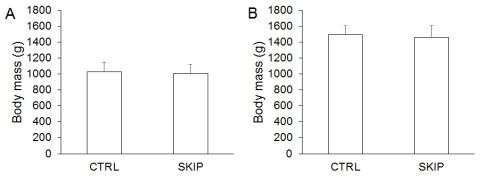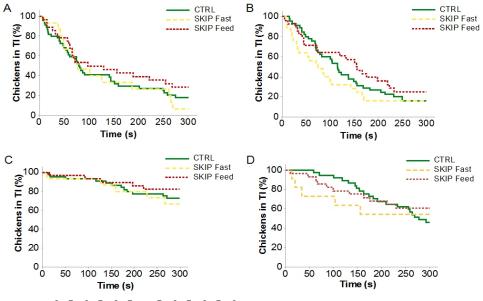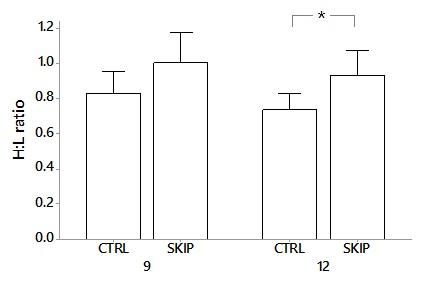Result and Discussion
Body mass
Body mass did not differ between the CTRL and the SKIP in either 9 or 12 weeks of age which would mean that the SKIP animals grow in agreement with the CTRL. This was predicted as the SKIP group were managed to achieve the same growth curve as CTRL and got more food in total.

Novel object (NO) and tonic immobility (TI)
Fasting animals significantly approached the NO more, and seemingly stayed shorter times in TI although not statistically significant, meaning that SKIP animals are interpreted to be less fearful on fasting days.
These results have been reported in other studies, where the degree of feed restriction decreases fearfulness (Hocking et al., 2001; Savory et al., 1993)
In order to get statistical significances between the groups in TI, more animals needs to be tested in future research.


Activity
The CTRL were more active than SKIP regardless of feeding or fasting day or age, and were especially active around feeding (7 AM).

Could be explained by high food competition for the CTRL chickens as they were provided with less food than SKIP chickens and that SKIP chickens had habituated to their regimen.
Glucose, liver mass and glycogen
Fasted animals had lower plasma glucose levels. The glucose concentration decreased for CTRL over the day but increased for the SKIP on feeding days.

On feeding days, the liver mass and total glycogen level for the SKIP group were significantly higher.

These results indicate that SKIP animals store energy as glycogen in the liver to utilize later on, which would also explain the higher glucose level of SKIP in the afternoon on feeding days.
H/L ratio
SKIP birds had higher H/L ratios at 12 weeks of age compared to CTRL birds. Both SKIP birds and CTRL birds had high H/L ratios when comparing with references of stress (0.5).

This result means that both the CTRL and the SKIP were stressed in the study.
Responsible for this page:
Director of undergraduate studies Biology
Last updated:
05/17/16
